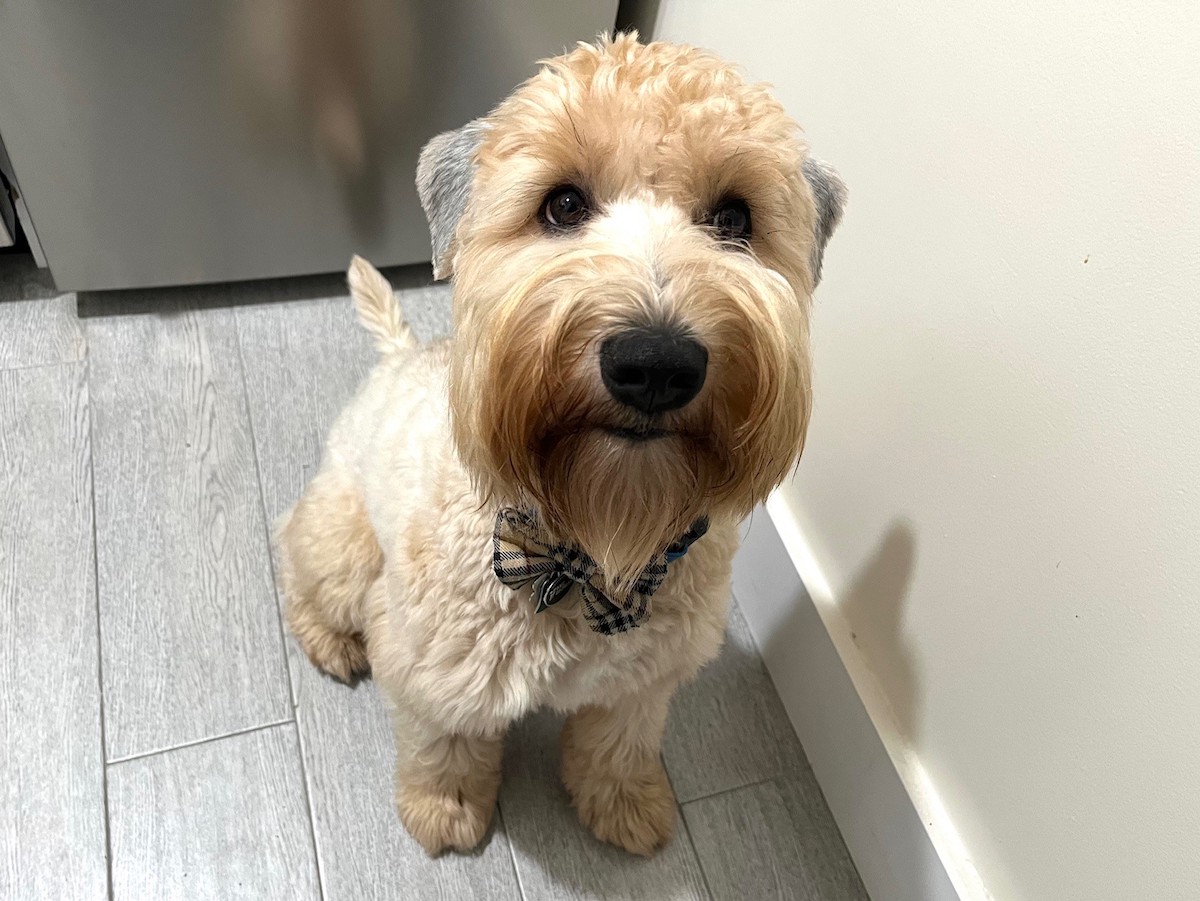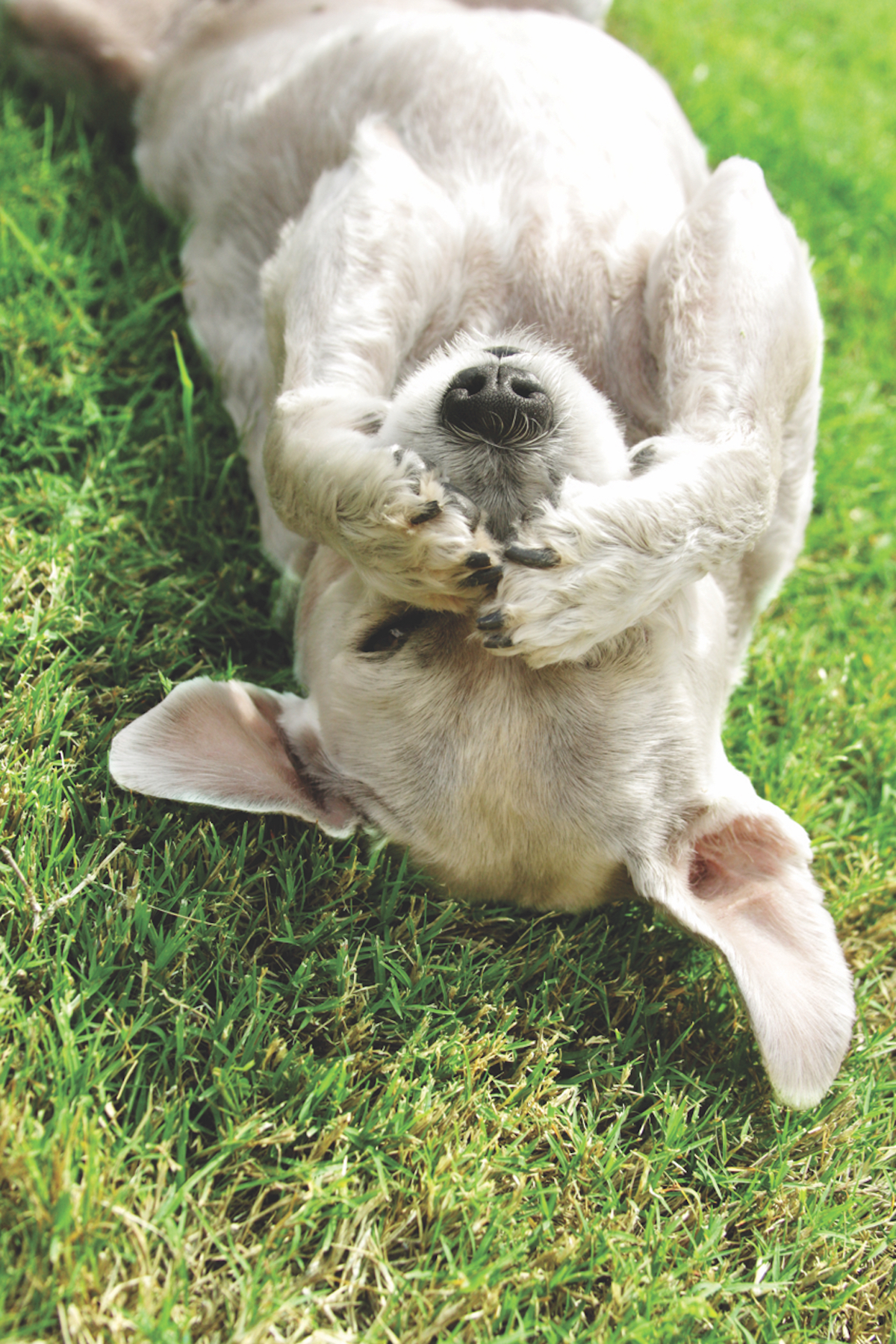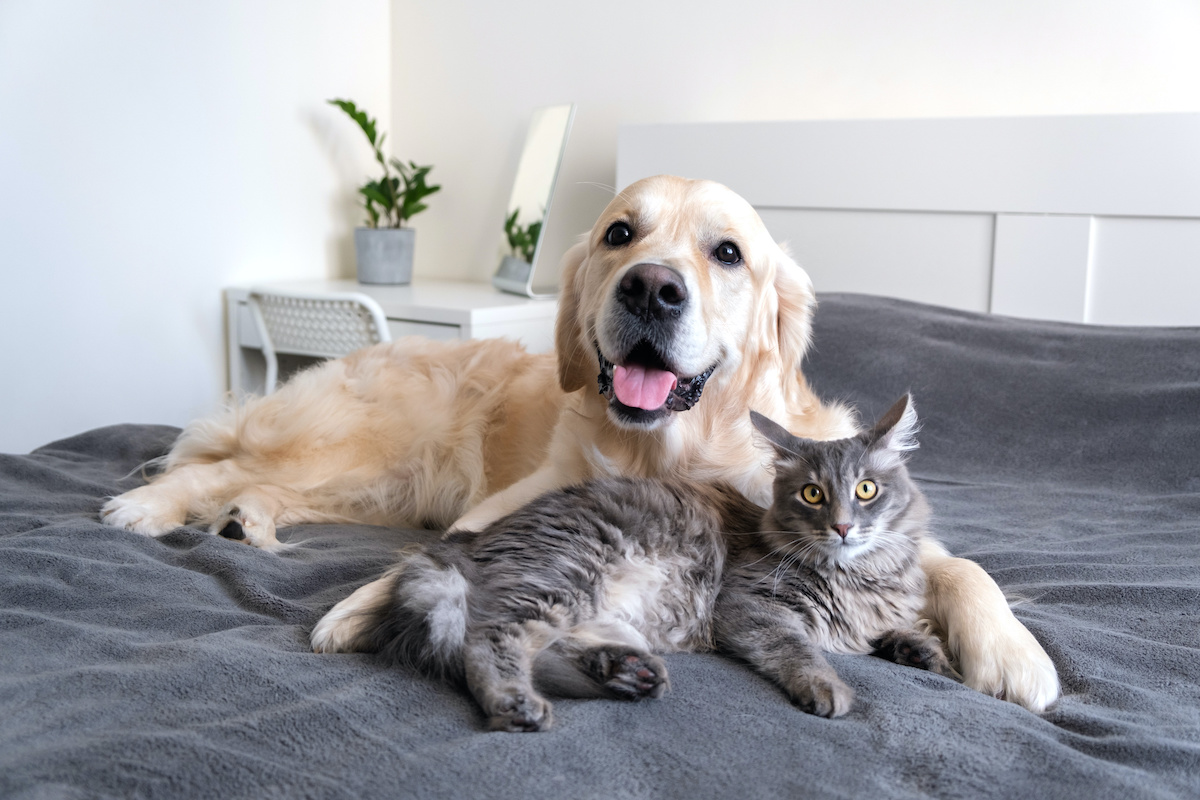By Dr. Parker T. Barker
And you wonder why dogs smell the butts of other dogs. Have you ever gotten an up-close personal whiff of a friend who had too much garlic at lunch and is currently reeking of it? Same thing can happen to dogs. We need a little help to keep our mouths “minty fresh” as they say on TV. Seriously, no dog should have bad breath. But sometimes it isn’t just because we’ve been chewing on something in the yard that is yucky. Sometimes it means we are sick. Here are some things to look for that will let you know if you go for the tooth brush or for the Vet.
One of the biggest hints that your dog is having mouth problems is if they suddenly become a chewer of all things with texture. Like a toddler, dogs will want to rub their gums or teeth if they hurt and chewing is a great way to do it. Other things that should make you consider your dog’s teeth might be causing a problem:
 1. Foul odor coming from your dog’s mouth
1. Foul odor coming from your dog’s mouth
2. Red or swollen gums
3. Bleeding gums
4. Sudden change in eating or chewing habits
5. Pawing at the face or mouth
6. Compulsive nose licking
If you notice any of the things above, please take ol’ Fido to the Vet as soon as possible.
Also, if your dogs breath suddenly has an unusual smell it might be time to see your Veterinarian. The smell might indicate a more severe problem than just teeth. For example:
• Unusually sweet or fruity breath could indicate diabetes, particularly if your dog has been drinking and urinating more frequently than usual.
• Breath that smells like urine can be a sign of kidney disease.
• An unusually foul odor accompanied by vomiting, lack of appetite, and yellow-tinged corneas or gums could signal a liver problem.
So now you have ruled out really serious problems, what do you do?
If plaque is the culprit, your dog might require a professional cleaning. If it’s an issue of diet, you might have to change your dog’s regular food. If the cause is gastrointestinal or an abnormality in your dog’s liver, kidneys, or lungs, please consult your Vet about steps you should take.
What steps should I be taking to keep my dog from getting dental problems?
• Feed your dog a high-quality, easy-to-digest food.
• Brush your dog’s teeth frequently —every day is ideal. (Please be sure to use toothpaste formulated for dogs as human toothpaste can upset a canine’s stomach.)
• Provide hard, safe chew toys that allow your dog’s teeth to be cleaned by the natural process of chewing.
• Give your dog well-researched treats formulated to improve breath.
OK, I’ve decided to brush my dog’s teeth. What do I do now?
Brushing your dog’s teeth isn’t the easiest of tasks to accomplish. Ideally, you started when they were just a pup so that seeing a brush coming towards them doesn’t cause panic. But the reality is that few dogs get their teeth brushed when they are old or when they were young.
1. Try to brush at the same time every day or every week.
2. The best time for brushing is after walking and feeding but right before bed, when your dog may be most relaxed.
3. Inspect your dog’s mouth before brushing. Make sure the gums are pink and not bleeding, and look for broken or chipped teeth. If you spot any of these signs, take your dog to the Vet for a checkup.
4. Introduce the taste of toothpaste to your dog before you brush. The best way to do this is by applying a small amount of toothpaste to your index finger and allowing your dog to smell and taste it. Did you know canine toothpaste comes in flavors? Chicken is my personal favorite.
5. After your dog has sniffed the toothpaste and is used to its taste, apply more toothpaste to your index finger and carefully touch the gums, so your dog gets used to the feeling.
6. Remember; do not attempt to wipe all of the teeth in the first or second brushing.
7. After you have introduced cleaning and toothpaste to your dog, it’s time to introduce the toothbrush.
Experts say take it slowly. This is like training a dog to do a new trick. You need to make it stressless and fun for your pooch and do it often so they remember.
• Apply a small amount of toothpaste to the toothbrush.
• Let the dog lick it off.
• Start by brushing one tooth with a gentle back and forth motion.
• Gradually increase the number of teeth brushed by one tooth per day.
So that’s it folks. You really do need to clean your dog’s teeth even if they don’t smell like the inside of a garbage can. Bad breath in dogs can be managed, but like all things it will take some effort on your part and some good tasting tooth paste!
Dr. Parker T. Barker received his doctorate in Squirrel Chasing and Hoovering from the University of Hartford, CT Rescue Center.






